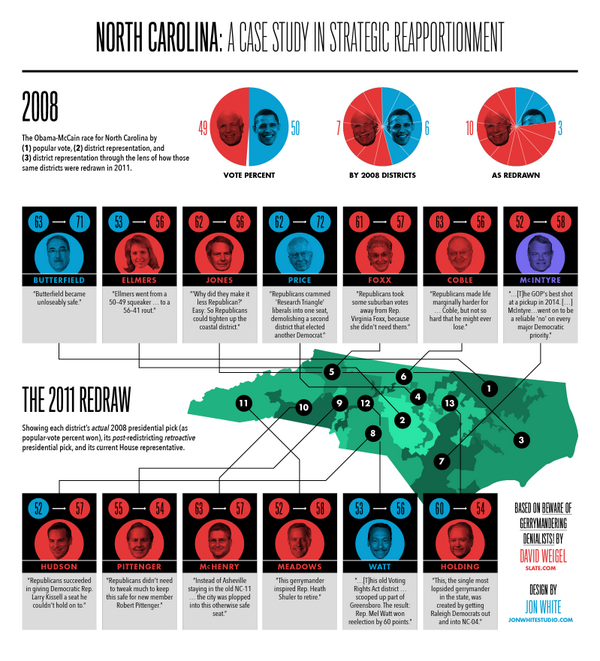More on the perils of Gerrymandering
Matthew Martin
10/14/2013 08:05:00 PM
Tweetable
What this illustrates is that while it is totally true that gerrymandering to gain seats requires that you make some districts riskier, it does not necessarily require making the "median" districts any riskier. That's a totally valid point. You can certainly imagine a scenario where republicans draw up a map taking voters out of extremely republican districts and pushing them into districts that were previously republican leaning but competitive.
But, this is still a risky strategy. Weigel says that you would need a significant "wave" election to really see this strategy fail for republicans, which is true. But the point is that a wave election would do a lot more damage under a gerrymanderd scenario than a less-gerrymanderd one. When you weaken a district from 70% republican to 60% republican, then a 10-point "wave" will unseat an incumbent that was previously thought to be invincible. That, in turn, means that the party will no longer be the incumbents in tons and tons of districts where they had planned not to expend many resources, and will have to expend massive resources to win even a fraction of them back due to the incumbent advantage. For many districts, it may not be possible for them to ever recover once the incumbency advantage is lost.
If the GOP's historic all-time low approval rating lasts until the election, this gerrymandering could destroy the GOP for a very long time. Recall that, when FDR's democrats swept into power in 1932, democrats retained almost uninterrupted control of both houses of congress (with two extremely brief exceptions) until Newt Gingrich in 1994.
